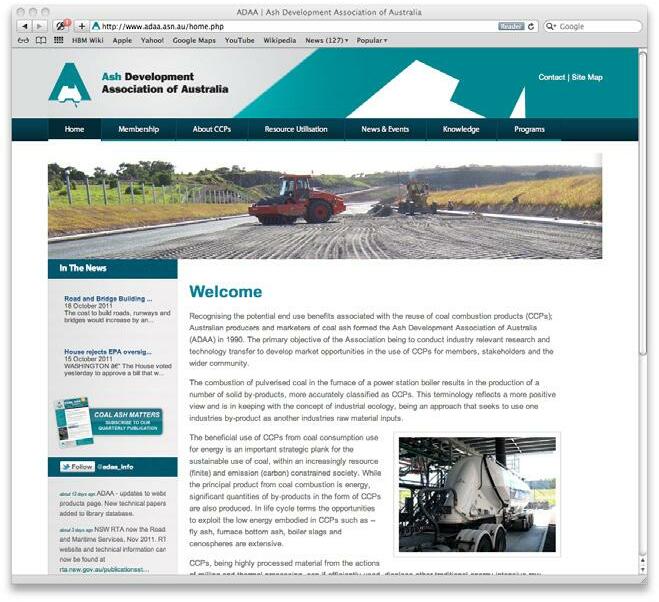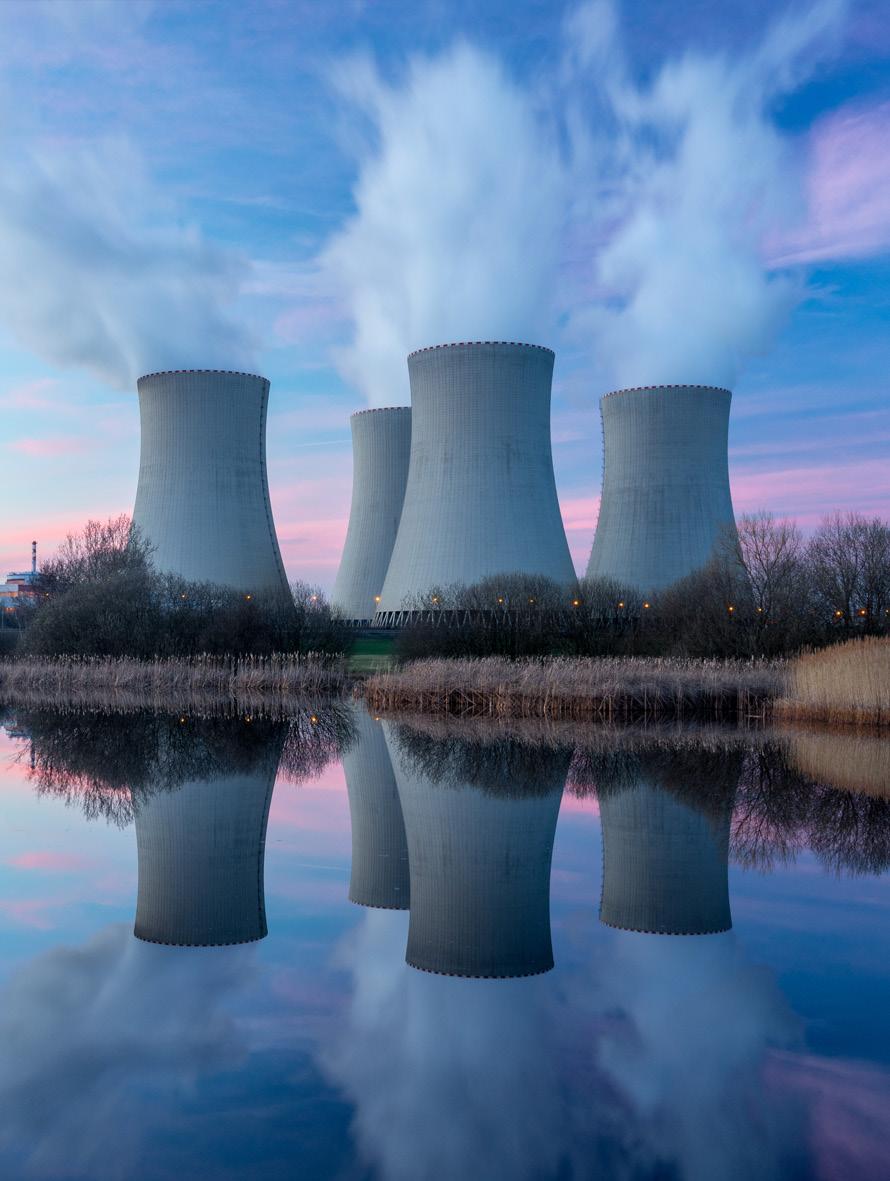




primary role of the ADAA
bring
to
Since the April edition, there has been lots of activity in the coal combustion products space! In this issue we start with an interesting ‘out of this world’ artificial intelligence (AI) model developed by Meta that optimises and sorts concrete mixtures best known for sustainability and strength. Who would’ve thought? It seems everyone is joining the revolution and journey towards a sustainable future!

To keep going with the theme of innovation and sustainability, we also have an article on ADAA member, Latrobe Magnesium (LMG) who has now produced the world’s first magnesium ingot recovered from brown coal fly ash stored in repositories at the Yallourn Power station – what a big achievement! Just another excellent success story about Australian companies ‘punching well above our weight’ in the innovation and technology space.
We share a local story from the Illawarra, near Sydney Australia – which is on the brink of reducing 88% of Australia’s emissions thanks to a new report by the Australian Industry Energy Transitions Initiative (ETI) and ADAA research collaborator member, CSIRO. Be sure to have a read at what this means as we transition to a net-zero society. Continuing in this theme we feature the collaborative partnership of Energy Australia and Edify Energy who have developed a one-of-a-kind energy solution. The Gannawarra Energy Storage System (GESS) will be the first of its kind in Australia. You don’t want to miss this one.
As we well and truly say goodbye to the harrowing days of COVID-19, we are excited to share CONCRETE 2023 will be held in Perth. The Biennial National Conference is back, and they are inviting the submission of abstracts for this major event. All the details about the conference so far are in this issue, including how to submit your contributions, registrations, and early bird registration rates.
Have you wondered what it would be like to work at a Stanwell Power Station? We feature a unique story with our member, Stanwell Corporations to show the interesting work performed by an Optimisation Lead that supports continuous improvements on site, and ultimately help to contribute towards an efficient circular economy. We also discuss Stanwell Corporations commencement of the Clark Creek Wind Farm, making a mark towards Australia’s reliance on fossil fuels. This issue details the exciting project with the first stage officially underway.
It is conferences galore as we also announce WOCA 2024! The World of Coal Ash international conference is on the horizon. All the details about the conference so far are in this issue, along with a WOCA 2022 wrap up by Craig Heidrich, CEO featuring the honorary award recipients.
Have you heard the massive achievement by BG&E? As part of the Armadale Access Alliance (AAA) team, BG&E has collectively won two awards at the Annual Masters Builders-Bankwest Excellence in Construction Awards, for their diligent planning, designing, and constructing of the Armadale Road to North Lake Road Bridge project. You can read all about the world-class project in this issue.
Lastly, we are pleased to announce a new member (re)joining the association, Cement Australia. Cement Australia has been a long-term market developer and supplier of the building materials industry with supplementary cementitious materials. The association welcomes back Cement Australia and their support of our primary charter, together with Adbri who re-joined last year!
Finally, The Ash Development Association of Australia would like to say a big thank you to our members for their support and contributions over the past 12 months -- this issue of CAM wouldn’t be possible without your amazing achievements. We look forward to reporting on your 2023 achievements next year and continuing to work together into the future.

Welcome to another issue of Coal Ash Matters, and the second and final edition for 2022!
In collaboration with researchers at the University of Illinois at Urbana-Champaign, Meta (Facebook’s parent company) has developed a new Artificial Intelligence (AI) model that optimises and sorts concrete mixtures best known for sustainability and strength. Who would’ve thought?
Last year, Meta achieved net-zero in their operations. Now, they’re turning their attention to achieving net-zero across their value chain by the end of 2030. The way they aim to do this is in their special way- by using new technological to speed up the process.
AI is used to optimise precise outcomes within ‘high dimensional spaces’, where data sets with many attributes can be modelled. When a valid data set is open, AI can be used to estimate or “learn” the feasible high-dimensional space in terms of relevant considerations, such as strength and sustainability. To develop this type of model, Meta acquired help from researchers at the University of Illinois at Urbana-Champaign, including AI expert Prof. Lav Varshney from the electrical and computer engineering department, and concrete expert Prof. Nishant Garg from the civil engineering department.

Using the input data on concrete formulas along with their corresponding compressive strength and carbon footprint, the AI model was able to generate several promising new eco concrete mixes. “With AI, we were able to accelerate the discovery process and validate good formulas within weeks. In this effort, the low-carbon concrete formulas generated by the model entailed significant replacement of cement (upwards of 70%) with a combination of two types of low-carbon substitutes, namely fly ash and slag,” they said which led to a process of elimination, where a final mix was chosen.
After this final formula was tested in a controlled lab setting, Meta agreed to “test them on multiple (noncritical) structures at our DeKalb data centre, namely the guardhouse floor slab and the floor slab of the construction management team’s temporary office space building,” they said. This concrete formula included upwards of 50% cement replacement with a combination of fly ash and slag.
The field tests also confirmed that the resulting low-emission concrete formula exceeded the seven-day and 28-day strength requirements, with a carbon impact 40% lower than the regional benchmark. However, Meta says to enable faster, more efficient construction required for our priorities, they need the concrete to meet specific strength thresholds earlier than seven days.
With the help of this AI model, Meta has been able to successfully design and use concrete that meets our long-term strength requirements and has a 40% lower carbon impact than the regional benchmark. “But we are just getting started. While we are encouraged by the success of this pilot, further developments and tests are needed to scale the impact of this innovation.
This includes a few factors:
1. First, we need to understand and optimize the performance of the mixes under different weather conditions, such as the cold weather in Illinois. Each data centre location has unique attributes that must be accounted for in the design and testing of concrete.
2. There are improvements to be made to optimize for early strength gain (e.g., to have it set faster) to accommodate a tighter construction schedule. There is an opportunity to directly optimize for such logistical considerations.
3. Finally, there is a need to understand how novel materials could be used in place of cement in concrete, particularly as the supply of traditional cement substitutes like fly ash and slag is projected to decrease in the long run (due to restrictions on coal and steel production). Material availability is an impor tant factor in construction; identifying novel materials that could be used in concrete can open new opportunities. Additionally, novel materials can further enhance the strength and sustainability of new concrete formulas,” they said
The resulting concrete mixes from Meta’s model can be used outside of data centre construction, and there is an opportunity to further develop this model to address other use cases. “Our exploration of innovative solutions to reduce data centre construction emissions is not limited to concrete. There are opportunities to reduce the emissions of other materials. We are also exploring innovative data centre designs as another way to improve sustainability,” they said.
ADAA member Latrobe Magnesium (LMG) has produced the world’s first magnesium ingot made from brown coal fly ash harvested from the repository at the Yallourn Power station.
The recent achievement secures the efficiency of LMG’s extraction processes that will be produced on a larger scale at its new demonstration plant in Victoria, Australia, once it is completed.
To prepare its processes ahead of the construction timeline, LMG has been working behind the scenes to perfect and produce a world-first, 100% recycled, 1kg magnesium ingot made from brown coal fly ash.
LMG’s CEO, David Paterson, told the ADAA the substantial achievement of creating this product speaks to the hard work and dedication of the team.
“Our own developed Hydrometer Process has produced a world-first fly ash-magnesium ingot that is 100% recycled, meaning no waste,” he said.
With the first 1kg ingot complete, Mr Paterson says LMG is on the right track to begin processing as soon as the plant is ready.
“Even though the demonstration plant is still under construction, we have proven that our work is going ahead successfully,” Mr Paterson told us.
The revolutionary material made from stored fly ash is best suited for the electric vehicle (EV) market, where it serves a critical purpose. “Lithium batteries in an EV increase the overall vehicle weight by 25%. Using magnesium makes for lighter vehicles that create fewer emissions,” he said.
In comparison with lithium as an anode material, magnesium has an energy density per unit mass under half that of lithium (18.8 MJ/ kg vs. 42.3 MJ/kg).
Knowing this, LMG plans to create a lighter vehicle that requires less energy and produces fewer emissions. But the best part is that the whole material at LMG is wholistically recycled, meaning a completely green product and soon, possibly green production.
“We’re also looking into having a solar farm to reduce production emissions as much as we can,” said Mr Paterson.
LMG says they are proud of their low emission processes, “... and hope to see greater use of green Magnesium to lightweight vehicles, electric or not, and make them more energy-efficient in future,” they said.
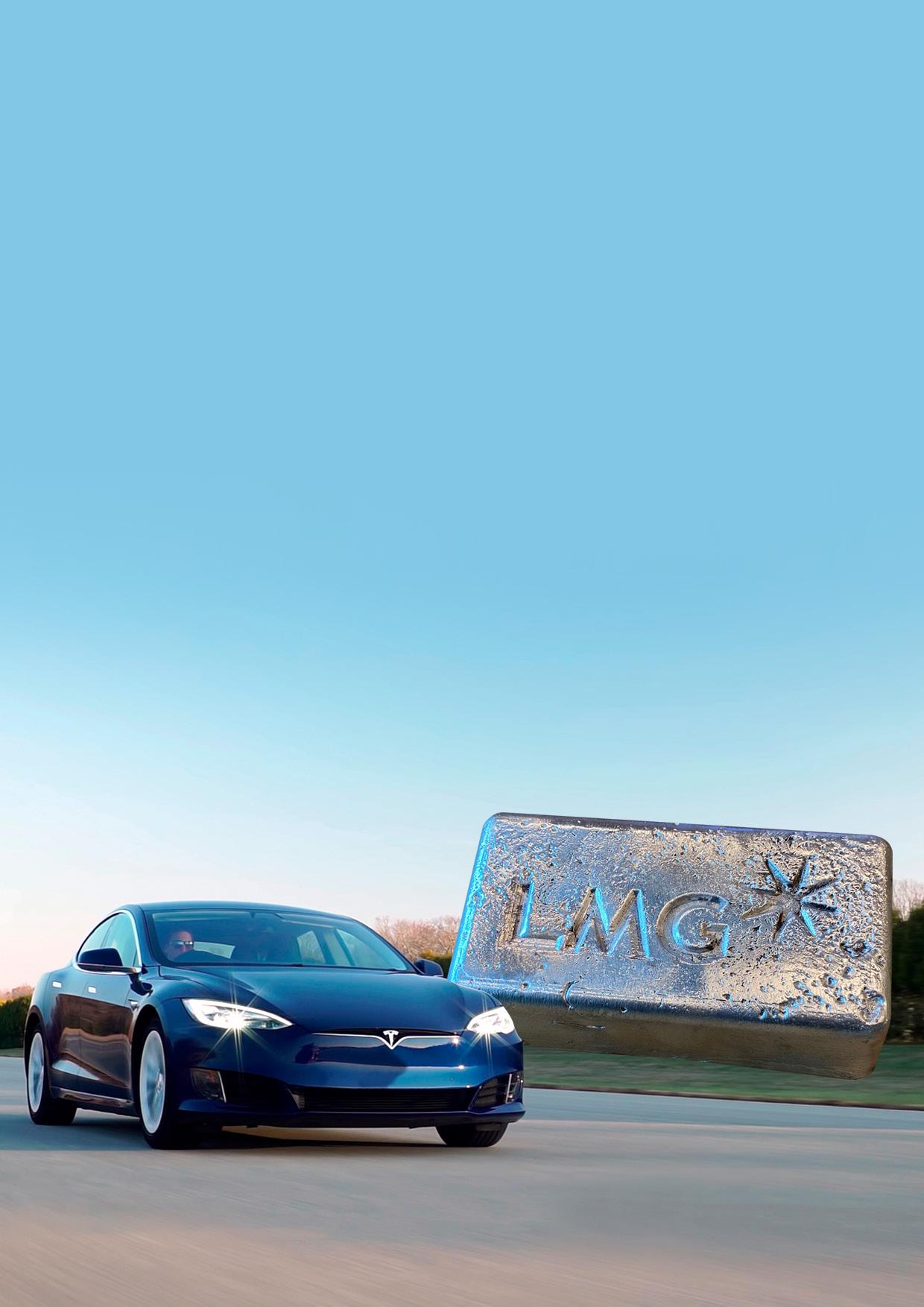
LMG’s new magnesium demonstration plant uses a world-first patented hydrometallurgy/thermal reduction process to convert industrial fly ash to magnesium metal, supplementary cementitious material, amorphous silica, char, and iron oxide.
In October 2019, the company signed an agreement with another ADAA member, EnergyAustralia Yallourn, to supply ash to produce the metal securing a circular future for ash.
As outlined in a new report by the Australian Industry Energy Transitions Initiative (ETI) and ADAA research collaboration member, CSIRO, an 88% cut to heavy industry emissions is possible and would set up key regions for the net-zero transition, says research backed by 18 of Australia’s largest companies.
Major Australian industrial regions such as the Pilbara, Kwinana, Hunter, Illawarra and Gladstone have the natural resources, workforce and baseline infrastructure that can be expanded to support Australia’s net-zero transition the report said.
Together, these regions are set to achieve an 88% reduction in their current emissions, which account for one-eighth of Australia’s total emissions. The report highlights that this immense figure amounts to removing all emissions from cars and light commercial vehicles across Australia.
The ‘Setting up industrial regions for net zero’ report is the result of a two-year collaboration between the ETI and some of Australia’s biggest companies. It was prepared for the ETI by not-for-profits, Climateworks Centre, based at Monash University, and Climate-KIC Australia, which are ‘co-conveners’ of the initiative.
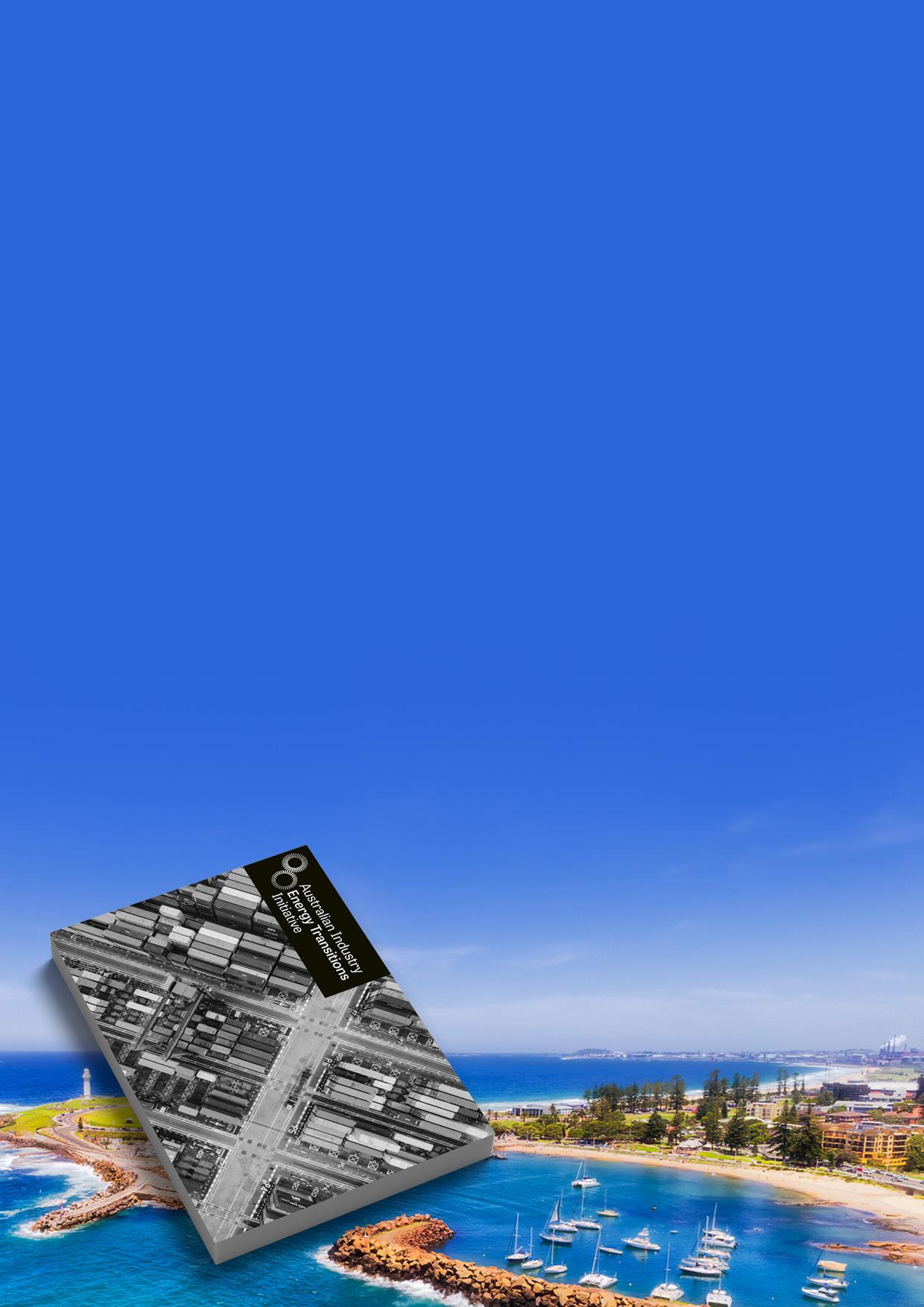
The report shows that industrial regions can contribute to reaching state and national net zero emissions targets by 2050 while driving employment growth and building Australia’s climate resilience.
In creating this report, the ETI hopes to bring together key industry partners to accelerate action towards achieving net-zero emissions in supply chains by 2050, across critical sectors that have higher abatement costs.
The ETI focuses on reducing supply chain emissions across five sectors that include iron and steel, aluminium, Liquified natural gas (LNG), and other metals including; copper, nickel, lithium, and chemicals, such as fertilisers and explosives.
The 18 initiative participants include Australian Gas Infrastructure Group, APA Group, Aurecon, AustralianSuper, BHP, BlueScope Steel, bp Australia, Cbus, the Clean Energy Finance Corporation, Fortescue Metals Group, HSBC, Orica, National Australia Bank, Rio Tinto, Schneider Electric, Wesfarmers Chemicals, Energy & Fertilisers, Westpac and Woodside Energy.
“Through this analysis of the decarbonisation potential of five important industrial regions, we have gained invaluable insights into the opportunities and on-the-ground challenges in the netzero transition,” said Australian Industry ETI Chair, Simon McKeon AO, Chancellor of Monash University, former CSIRO Chairman and former Australian of the Year.
The report finds Australia’s industrial regions can capitalise on global demand for low-carbon products and energy exports.
“This is achievable if we rapidly deploy existing technology solutions and support the development and demonstration of emerging opportunities through more proactive regional coordination and collaboration,” said Climateworks CEO Anna Skarbek.
However, the report revealed later on that an additional 25-47% (or 68.3 to 125.9 TWh of energy) of Australia’s total electricity generation would be needed to decarbonise these industries.
“This will require an unprecedented transformation of the energy system. Governments will have a significant role to play in achieving this, with supportive policy, programs and support for regional leadership efforts, especially in infrastructure which is an enabler of decarbonisation,” said Ms Skarbek.
The report has a set of recommendations to assist the acquisition of net-zero targets. This includes the formation of clustered industrial precincts in hard-to-abate sectors that are concentrated to assist with troubleshooting.
With pressure increasing on these industries to decarbonise, the next phase of ETI’s initiative will focus on setting decarbonisation pathways that prevent global warming to 1.5 degrees Celsius.
The collaborative partnership of Energy Australia and Edify Energy saw the creation of the Gannawarra Energy Storage System (GESS), the first of its kind in Australia.
Operations began in 2019 in Gannawarra Victoria, with the hope of stabilising the energy grid and enabling a more consistent power supply to local homes in the region.
The GESS will provide a combined solar and battery solution with the support of a commercial Tesla power pack system. The power will be provided at peak times out of sunlight hours, allowing for a more consistent energy supply in the hours that are needed most.
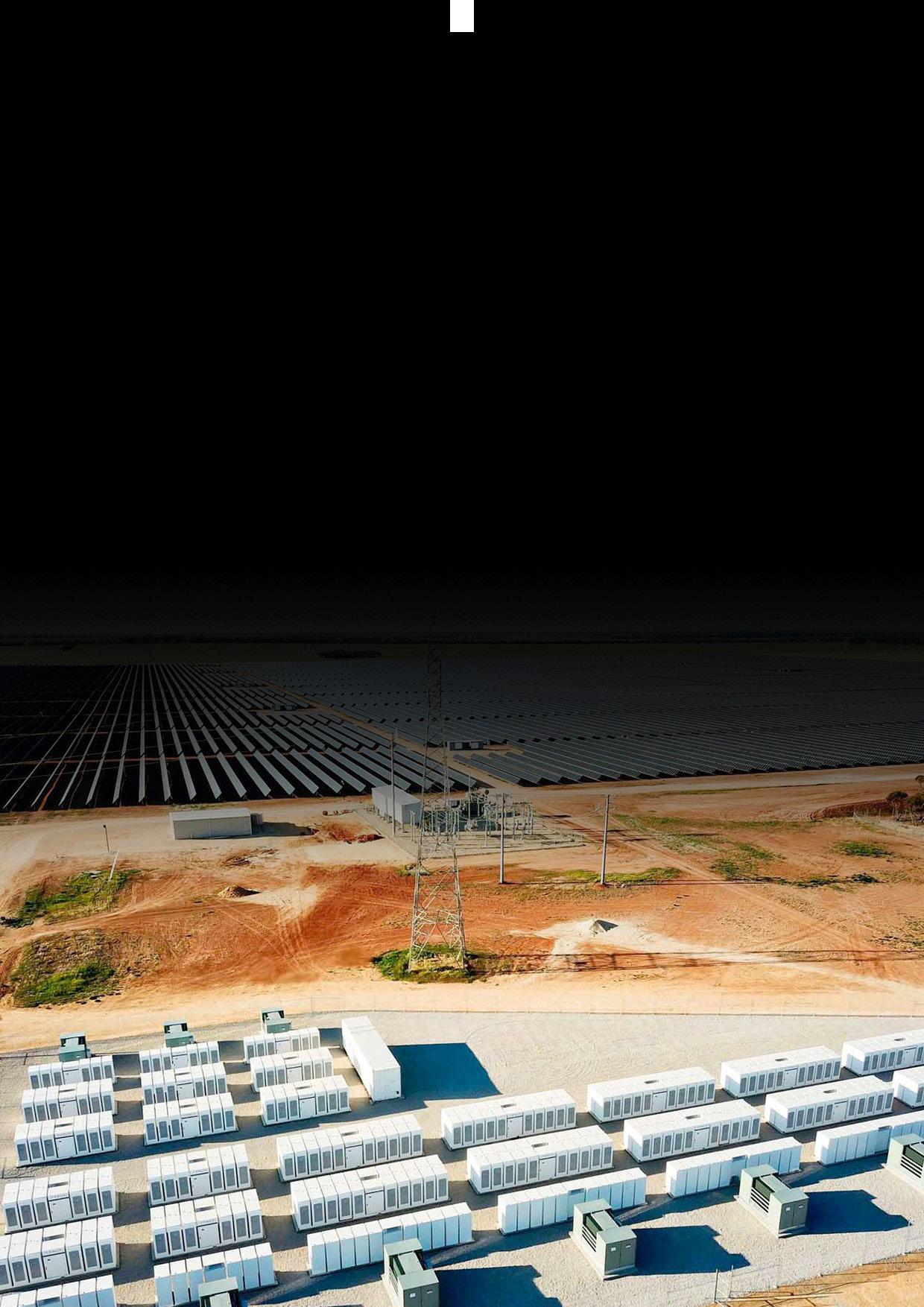
Edify Energy’s Head of Energy Markets, Andrew Stiel speaks on the importance of the partnership and the role the project plays in transitioning into a greener, more sustainable future. He explains, “Edify Energy brings specialty in renewable and storage project development and… Energy Australia… brings this deep, deep experience and expertise in managing energy market risk and what to do with products that come from renewable generators such as the Gannawarra Solar Farm and battery and how you ultimately supply that power,” he said.
The employment of around 250 people was secured during the construction, creating a positive impact on the Kerang community. In addition, a $5 million boost to local accommodation, hospitality, the trades, and services sector was procured.
GESS aims to power more than 16,000 homes to continue taking pressure off the energy grid now and into the future.
Concrete 2023 will be
topics
the
People involved in concrete research,
and for
papers for the conference;
of
Early bird registrations are
addition, The Concrete Institute of Australia

-
opportunity
up to A$200.
Coal Combustion Products (CCPs) – often referred to as “coal ash” and including “fly ash” and “bottom ash” – are solid materials produced when coal is burned to generate electricity. There are many good reasons why the 12 million tonnes of CCPs generated annually are viewed as resources. Beneficiating (using) CCPs conserves natural resources, saves energy, and reduces associated carbon emissions contributing towards an efficient circular economy.

Coal continues to be the largest energy source for electricity generation within Australia, and accordingly significant volumes of CCPs are produced, used, and stored annually.
Stanwell Corporation is a major provider of electricity and energy solutions to Queensland, the National Electricity Market and large energy users throughout Australia. As an ADAA member, Stanwell is also at the forefront of developing uses for CCPs.
The 1460 MW coal-fired Stanwell Power Station near Rockhampton is one of Stanwell Corporation’s major electricity generation assets. Stanwell Power Station facilitates the utilisation of increased fly ash in major infrastructure projects, including a road repair demonstration using CCPs on site at the power station.
Additionally, Stanwell has recently commissioned a new fly ash offtake facility at their 1843 MW Tarong power stations near Kingaroy, facilitating the reuse of up to 400,000 tonnes per annum of high-quality cement grade fly ash.
Stanwell attributes its success to the skill and dedication of its workforce. One of these invaluable employees is Jodi Milne, the Coal Combustion Products Marketing Specialist at Stanwell Corporations. Jodi moved over to the coal combustion team at Stanwell Corporations in February of this year after working as Stanwell’s environmental advisor for 5 years.
Jodi first became involved with CCPs through rehabilitation purposes at another Queensland provider, specifically in trialling and monitoring vegetation growth and looking at how to increase the use of recycled materials.
Jodi’s role as a Coal Combustion Products Marketing Specialist is an outward facing role, communicating and dealing with various internal and external stakeholders to deliver innovative benefits through the use of CCPs.
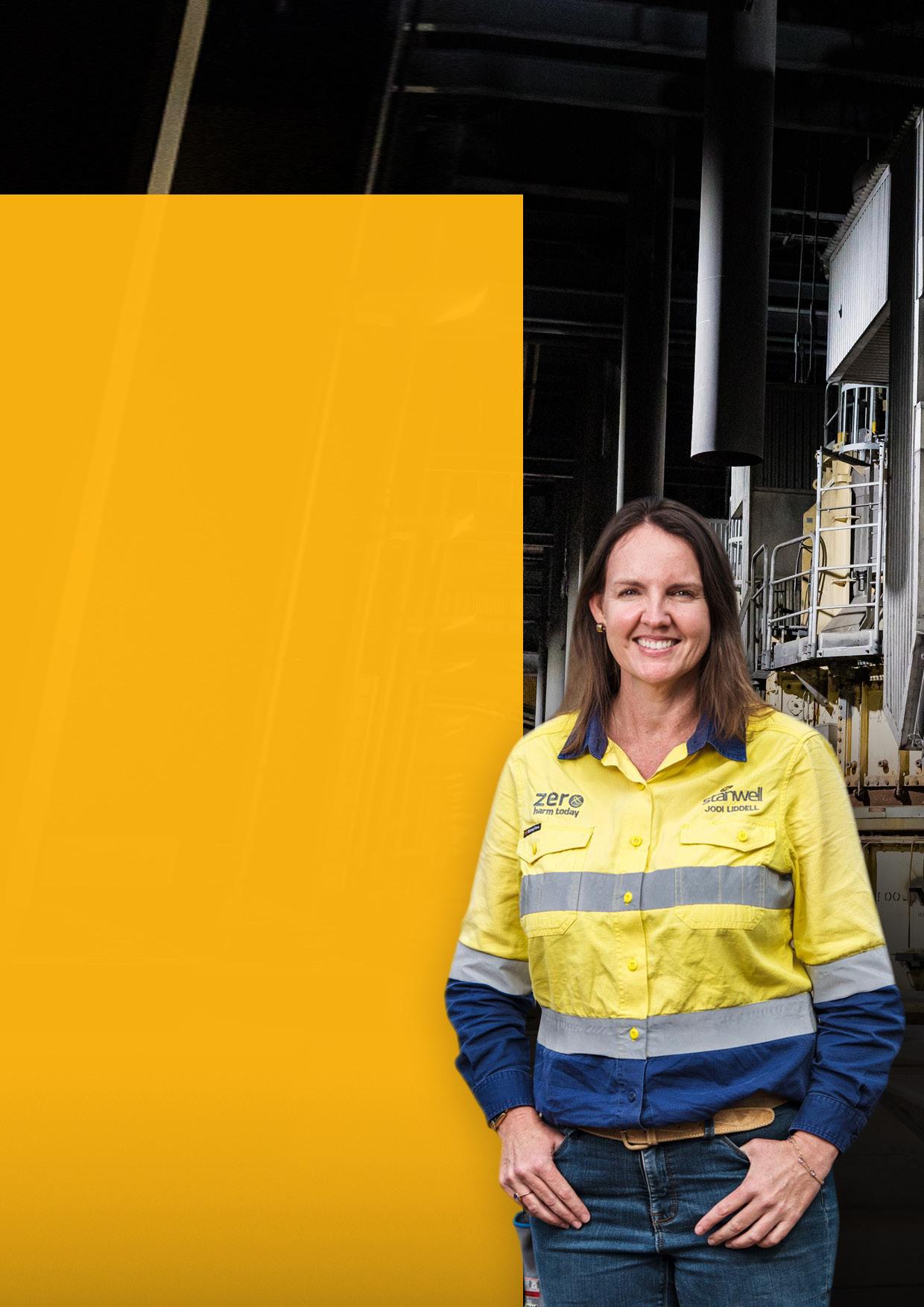
Jodi explains the love she has for her role is a direct correlation to the facilitation of CCPs in various applications and identifying robust solutions to the challenges that arise. One challenge is the magnitude of CCPS available that is just not being used, Jodie explains, “There are tonnes of CCPs available from electricity that can be used in various applications such as road bases and concrete, but why aren’t we using it?,” she said.
The dedicated work by Jodi and the many employees at Stanwell Corporation allows the organisation to continue their progression in the utilisation of increased CCPs in the built environment, which results in reduced associated carbon emissions, and ultimately contributes towards an efficient circular economy.
Applications incorporating CCPs have been proven to outperform products made without it!Photo: Jodi Milne
The World of Coal Ash international conference is on the horizon. Taking place on the 13-16 May 2024, the conference focuses on the science, applications and sustainability of worldwide coal combustion products (CCPs).
Located downtown in the vibrant Grand Rapids, Michigan city, the luxurious Amway Grand Plaza will serve as the host hotel. Attendees will have the chance to engage in the myriad of restaurants, craft breweries and shops all in close proximity. Conveniently, the DeVos Place Convention Centre will hold the exhibit hall and sessions just steps away.

WOCA 2022
World of Coal Ash 2022 just missed setting a new attendance record of 1,057 was just 18 registrations short of the 2019 record of 1,075, but the conference was very successful with a mixture of technical presentations, exhibits, and networking. Over 100 firms were on the exhibit floor with a wide variety of products and services for coal combustion products. Moree than 245 presentations were given during WOCA, with three (3) of these from Craig Heidrich, CEO for the Ash Development Association of Australia.
Curtis Wilie, a veteran of over 40 years operational experience in oil and gas production, discussed the use of coal combustion products for enhanced recovery from existing oil and gas wells. A panel discussion on the short-term and long-term outlook for the use of coal in power generation and other applications was next in the plenary. Dr. Rodney Andrews, Director of the Center for Applied Energy Research at the University of Kentucky; Nathan Berry, Vice President of Production for Big Rivers Electric; and Emily Regis, Fuels Manager for Arizona Electric Power Cooperative, and President of the National Coal Transportation Association presented information on activities within their organizations followed by a question-and-answer session.
WOCA 2022 award recipients were: The Alice Marksberry Memorial Award recipient is Bruce Hensel This award is sponsored by the UK Center for Applied Energy Research.
The WOCA Student Poster Award recipient is Benjamin Kienzle This award is sponsored by American Coal Ash Association Educational Foundation.
The WOCA Poster Award recipient is Chin-Min (Jason) Cheng This award is sponsored by Electric Power Research Institute.
The WOCA Student Oral Presentation Award recipient is Omar Amer. This award is sponsored by the Midwest Coal Ash Association.
If you would like to watch the presentations and proceedings papers from WOCA 2022, the materials can be found below: Website Link: www.worldofcoalash.org/2022-woca-proceedings
Access Password : 2022covingtonwoca

ADAA member, BG&E as a part of the Armadale Access Alliance (AAA) team, has collectively won two awards at the Annual Masters Builders-Bankwest Excellence in Construction Awards.
The awards are a reflection of the diligent planning, designing, and constructing that advanced the Armadale Road to North Lake Road Bridge project in Perth.
THE WORLD-CLASS PROJECT WAS RECOGNISED IN TWO CATEGORIES:
• Best Civil Engineering Works Over $100,000,000
• Construction on a Challenging Site.
The project was undertaken in a highly congested section of Armadale Road that is used by around 50,000 vehicles every day, creating a challenging reconfiguration of local roads. Subsequently, the bridge built over Kwinana Freeway was to ease congestion and improve access for Cockburn visitors and residents.
BG&E’s Technical Director, Civil WA, Boris Vujovic emphasises the importance of undertaking this prolific project; he says, “This critical infrastructure project provides many benefits for the community. The overall scope of works included easing congestion at the Kwinana Freeway, Armadale Road and Beeliar Drive Interchange, the city’s fifth most congested intersection, by segregating heavy regional traffic from local traffic. Effectively, a bypass was created around Cockburn Central Station and Cockburn Gateway Shopping Centre. Our experienced Civil and Bridge teams provided civil engineering and bridge design services for this project,” he said.
Ultimately the project resulted in a high quality finish, delivered on time and budget, with minimal disruption to the community.
• Construction of a new bridge over Kwinana Freeway, connecting Armadale Road and North Lake Road.
• Armadale Road upgraded from Tapper Road to Kwinana Freeway, passing over the intersection of Tapper Road with a new bridge, and under the intersection of Solomon Road, via a trench structure.
• New north-facing on and off ramps at Kwinana Freeway.
• Local roads reconfigured with two new roundabouts to maintain connectivity.
• Collector-distributor roads on both sides of the Kwinana Freeway from Berrigan Drive to Armadale Road.
• Modifications to the existing North Lake Road and Midgegooroo Avenue signalised intersection.
• Additional lanes and turning capacity added to the intersection of Armadale Road and Ghostgum Avenue to support ongoing residential growth in the suburbs of Calleya and Treeby.
Located in central Queensland, approximately 150km northwest of Rockhampton, operations have formally launched on the first stage of the 800 MW wind project that will displace 2.7 million tonnes of carbon each year, closing the gap in the transition to a green energy economy.
The project will be a part of a larger 1,200 MW project being developed by Squadron Energy (part of the Fortescue Future Industries group) incorporating 400 MW of solar power and battery energy storage, positioning it as the largest renewable energy precinct in the southern hemisphere.
A ground-breaking ceremony marked the commencement of construction, as special guests Stanwell Corporation CEO Michael O’Rourke and Richard Jeffery attended and shared details of their 15-year commitment to the project through Stanwell’s 346.5 MW long-term offtake agreement.

Michael emphasises their commitment to prioritising the creation of local jobs in regional Queensland, he said, “The first stage construction phase of the project will create up to 350 jobs, and up to 25 to 30 full-time jobs once the wind farm is operational.”
In addition, the agreement aims to support investments where possible in local Queensland economies. Upon completion of stages 1 and 2, enough power will be produced for more than 660,000 homes in central Queensland from 2024 and beyond.
Australia is in the midst of breaking its reliance on fossil fuels due to the revolutionary Clark Creek Wind Farm.
“The first stage construction phase of the project will create up to 350 jobs, and up to 25 to 30 full-time jobs once the wind farm is operational.”
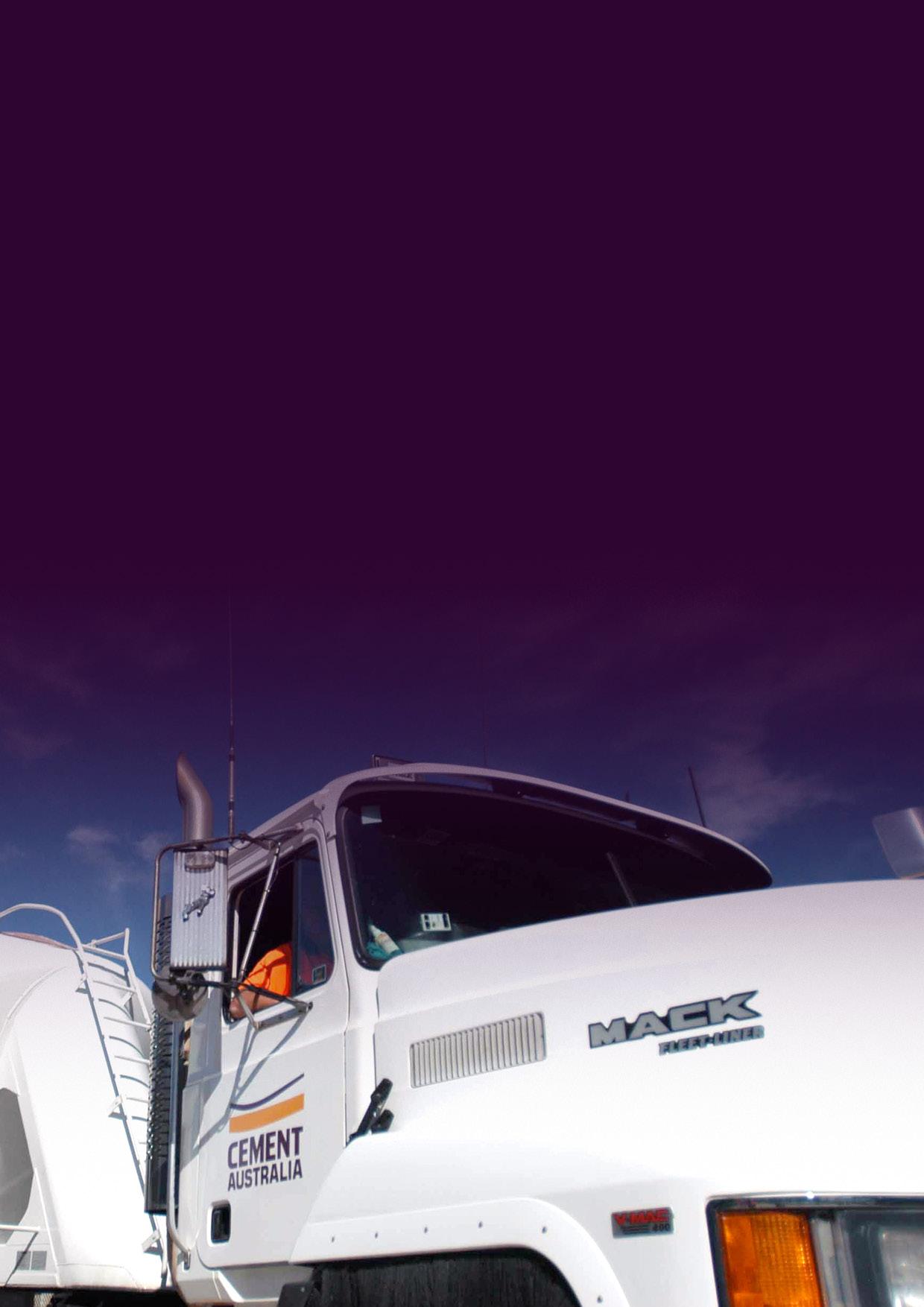
Cement Australia has been a long-term market developer and supplier of the building materials industry with supplementary cementitious materials such as fly ash. This helps to improve concrete properties and enhance environmental performance on low carbon concrete products. The National Technical Manager of Cement Australia, Paul Kidd, emphasises his excitement for the partnership, explaining, “We look forward to working with you and the ADAA team over the coming years,” he said.
Cement Australia actively promote fly ash benefits on its website. Apart from offering these environmental advantages by re-using industry by-products, adding fly ash can also improve the overall performance and quality of concrete. Fly ash affects the plastic properties of concrete by improving workability, reducing water demand, controlling bleeding, and lowering the heat of hydration. Fly ash increases strength development at later ages, reduces corrosion of reinforcing steel, and generally improves resistance to chemical attack and mobility through a reduction in permeability.
The Association welcomes Cement Australia and their support of our primary charter, which is to increase users, stakeholders, and regulators awareness of the benefits arising through the effective utilisation of coal combustion products, highlighting them as a valuable mineral resource.
Cement Australia is Australia’s leading supplier of Fly Ash, with Fly Ash recovered from the waste of coal fired power stations in QLD, NSW and WA.
Fly Ash is used as a cement replacement with over 1.4 million tonnes of concrete grade Fly Ash recycled through the construction industry every year. Cement Australia classifies, stores and distributes concrete grade Fly Ash and other ash products to both local and interstate markets. The quality and consistency of Cement Australia’s Fly Ash results in enhanced mix design efficiencies in concrete.
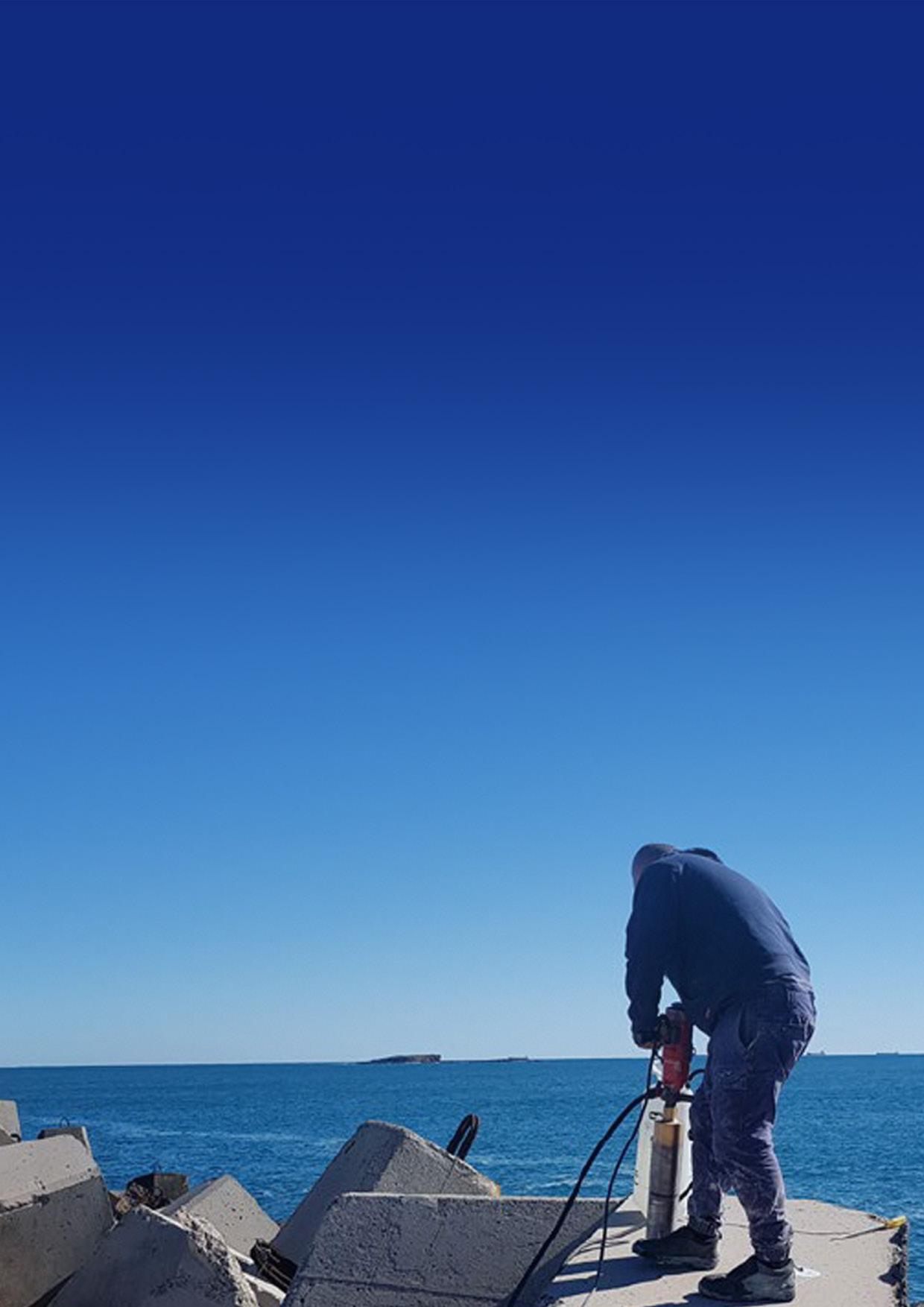
This Australian Government led initiative is funded by the Cooperative Research Centre (CRC) for Low Carbon Living Ltd, with financial contributions through the Ash Development Association of Australia (ADAA) and Australasian (iron & slag) Slag Association (ASA), and in-kind support from Wagners and Cleary Brothers.
The anticipated rise in coastal wave energy and the continuing environmental attack from climate change scenarios are predicted to cause catastrophic impact on coastal protection structures, signalling an inherent need for upgrades to withstand the stronger wave actions and higher rates of damage.
To facilitate this need, UNSW research team developed a unique high-density low carbon geopolymer concrete (GPC) incorporating steel furnace slag (SFS) as aggregates, which is about 20-25 per cent heavier than natural basalt occurring as a by-product of steelmaking. This density has significant costal engineering advantages.
This low carbon construction solution means a reduced dependency on fossil fuels and emission intensive constructions materials like Portland Cement thus, contributing to the target carbon neutrality by 2050.
Extensive trials were undertaken by the UNSW research team, to determine the benefical use of steel furnace slag (SFS), both fine and course as concrete aggregates in a predominantly low calcium binder using GGBFS and fly ash. After formulating several mix designs comprising of exclusively slag cement and fly ash for the binder, researchers observed that SFS aggregates did not display and adverse expansion characteristics when used in conventional concretes. Furthermore the mix designs performed well in ambient curing environment for strength gain.
The laboratory mix utilised 65% fly ash and 35% ground granulated blast furnace slag by mass, respectively, activated with an alkaline solution of sodium hydroxide and Grade D sodium silicate solution blended in proportions to maintain a modulus ratio of 1.5 and a Na2O percentage of 5.5. The critical outcome from the trials is the successful incorporation of the SFS aggregates in the mix and thus, achieving a higher density margin.
Following the trials, the laboratory mix design was optimised by Wagners from Toowoomba QLD to adapt to the commercial batching methods (readymix trucks), with concrete batching completed in three pours. A total of thirteen armour units were cast in three pours utilising approximately 90m3 high-density GPC.
The compressive strength and splitting tensile strength of GPC batched in the lab trials and poured on-site in Port Kembla were evaluated using cylinder specimens cured in air and saline water.
Critical outcomes included:
• Lab trialled high-density GPC: steady increase over time with about a 14% rise in compressive strength from four (4) weeks to three (3) years.
• Air-cured samples: samples collected (cylinders) from pour 1 and pour 2 show significant strength reduction held in the laboratory water tanks. For instance, with respect to the 90 days strength, pour 1 had 54.6% strength reduction and pour 2 had 33.8% strength reduction in three years from air curing. These results were ‘Test method’ related and future changes are proposed for handling samples.
• On-site samples: higher strength than air-cured specimens collected from site pours and conditioned in the laboratory.
The utilisation of steel furnace slag (SFS) in low carbon Geopolymer Concrete (GPC) offers a unique concrete product to upgrade the coastal breakwaters to withstand climate change scenarios, save material consumption, and allow for greater stability without restructuring current Hanbar amour unit designs.

